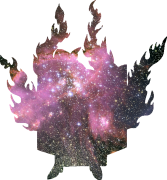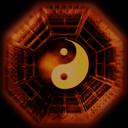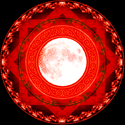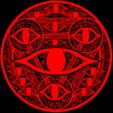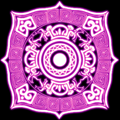Summer Solstice Letter - Greetings from the Land of Gods! - 21st of June 2025
As of writing this, I am currently staying in Japan. Going to Japan has been a dream of mine for a long time. For about as long as I have found either reasons or excuses to not go there. The reasons and excuses have however ran out, and now I am here.
I’ve wanted to come here for a variety of reasons that have changed over the years. That past year and half have however brought on a whole new level if interest that turned my journey from an otaku pilgrimage to a real pilgrimage. That said, there’s bit of that otaku pilgrimage there too.
After making contact with the kami of Gensokyo, traveling to Japan to see holy places associated with their origin became an extremely high priority. This has served as the backbone of my travel plans, and led me to some places very rarely frequented by other foreign travellers. I feel like this has really opened up the country for me, along with me studying Japanese. Even if you didn’t find it in yourself to believe the spirits of Gensokyo to be real, some of the sites that served as inspiration for Touhou are extremely remarkable in itself.
This is the 2nd draft of this text. The first one included a more detailed travelogue, but it soon exploded in length. I may yet do a more detailed what happened and where type of write-up, but it’ll have to wait. So many things keep happening, and I find myself having less time for writing than I expected. This is mostly a good thing, as I have spent the time actually going to places and having experiences instead of being cooped up at hotels with my laptop.
Instead of a travelogue, I will offer some preliminary observations and findings relevant to the topics of this site.
How (popular) religion is practiced in Japan
Two weeks in Japan won’t make an expert on this subject, and I think there is a quite large spectrum of how religion is practiced in Japan. These are then best taken as observations of popular religion. As a caveat, I have mostly visited rather large shrines, though I have also visited some smaller ones, most notably as part of the Seven Lucky Gods pilgrimage in Asakusa and Haniyasushin shrines in Fukuoka.
The first thing I want to say is that for a nation that is sometimes described as being unreligious the Japanese sure do love to visit shrines and temples. All the major sites I have visited had plenty of locals moving around, some to the point of being crowded. Sensoji in Asakusa is full of tourists too, but Zensoji had less than a dozen other foreign tourists, and it had managed to draw in crowds on a weekday. Large number of people defied rain to visit Togakushi shrine, and even off-tourist season Suwa Taisha saw some fellow visitors on a day with bad weather.
So obviously there is an appeal to these places, but what exactly it is, I don’t quite know. I haven’t managed to have quite that intimate discussions. However, there’s been quite a lot of Japanese people that I’ve ended up talking with that have reacted very positively when I have told of my interest in shrines and temples. I think these places and traditions are important in some way or another to many Japanese people.
The bar of entry for participating in Shinto and Buddhism in Japan is very low. There are certain behavioral norms you are expected to follow, but I didn’t see nearly everyone bowing at the torii or using the temizuya. I didn’t quite so keenly track how many prayed, but many did. Many also bought omamori, collected goshuin or placed offerings onto offering boxes by smaller shrines or Buddhist sites.
I didn’t know quite what to expect, but no-one has said no or indicated any noteworthy resistance to me being in these places and taking part. I’ve gotten a few odd looks, but these might have either been because I’ve been to places where it’s exceedingly rare for foreigners to end up, or because of detestable cases of foreigners defacing holy place. This “taking part” has included asking for and receiving ofuda, which was something I was really nervous about. I got once corrected on terminology, which has been the greatest amount of “resistance” I’ve experienced so far. Sometimes there’s been no questions asked at all, and other times when the questions were asked, they were mostly of my origin and interest towards the matter, not some interrogation of faith. Two times I received a surprisingly positive reaction to asking for an ofuda.
So the way Shinto and Buddhism are practiced in Japan are with low bar of entry and very open, even to foreigners. Still, this openness and low bar of entry doesn’t mean that there aren’t people who express great devotion. This feels more apparent in Buddhist sites, where there were notable numbers of people praying with very obvious intent. The Zenkoji museum was full of art and written prayers donated there after miraculous events experienced by believers, and this art did not stop at medieval times either. So while at first Japanese religion doesn’t seem to have the kind of ardent faith behind it, one can find that aspect in there too.
Another aspect is that how strongly it is tied to holy places and pilgrimages. There’s an aspect of Japanese religion that is very oriented towards local things, like the Suwa faith is very oriented to deities and spirits residing in Suwa. This is reflected strongly in official Shinto culture, where it’s thought that one should maintain a relationship with their ujigami shrine, though these days it might mean simply the shrine closest to you physicaly. Origin, clan, lineage, the land and it’s spirits form a whole that might have become loosened, but not undone.
In contrast with this locality there is also an aspect that is oriented towards special places outside of your local surroundings. People visit famous holy places from all over the country, and many shrines and temples have some mythological background or particular benefits associated with these places. For example, Zenkoji temple is known for it’s key to the pure land and healing qualities, while Togakushi shrine is deeply tied to the mythology of Amaterasu Oomikami hiding in the cave. These qualities make such places appealing to pilgrimages from far away.
Feeling the kami and buddhas in this world
The way Japanese religion is strongly tied to holy sites is also relevant to the more numinous side of Shinto and Buddhism. Before I went into Japan, I was quite well-versed with the idea that the Japanese tend to see the spiritual as also residing in the material world. I have been trying to pay attention to this aspect of reality for quite a while now, and especially this spring felt like I was making genuine progress towards it. I felt things I had not felt before with large trees in parks and the kind of rocks the Japanese would call iwakura rocks.
However, this did not quite prepare for me how strongly it could be felt in some places in Japan. It didn’t prepare me for how the Japanese have developed ways to bring out, call attention to the numinous with the way sacred territory is marked, constructed and maintained. The holy sites are not exactly in a state of pure nature – though some of the areas beyond them are, in which case the holy sites act as a kind of liminal place in themselves. Rather, there’s the shrine structures, sometimes small, sometimes very large, as well as shimenawa, shide and torii. In Buddhist places, there’s plenty of statues, but sometimes they blend into the nature – or rather feel like the Buddha or Bodhisattva has been brought out of the nature. It seems to be a kind of mutual process where human intervention somehow illuminates the super-nature in nature.
The first time I very strongly felt the presence of something numinous – the Japanese would no doubt call it kami – was at Shizuoka Sengen shrine. There is a smaller shrine on the premises, sitting next to a larger shrine dedicated to Sukunahiko. I prayed at this shrine the last, and as I was about to do so, I paid attention to how remarkably light was filtering between the tree branches, streaming down from the mountains. It wasn’t just an aesthetic quality, it wasn’t just pretty, it felt genuinely awe-inspiring and transcendental. It wasn’t legible communication, but it was most definitively something, that “something” I have felt with the old trees and rocks, but much more amplified.
The three strongest incidents so far of feeling the kami were at Suwa Taisha Maemiya, the ascent into the Okusha of Togakushi shrine and seeing the Kegon waterfalls. Maemiya was a near totally overwhelming experience. The venerable building is surrounded by even more ancient trees and a stream runs next to it. A chorus of insects, birds and perhaps frogs surrounded the shrine, so localized it sounded as if the shrine itself was making the sound, like the kami had a voice that was a constant drone of buzzing and chirping. It wasn’t just the sound – it was some liminal, numinous quality to it. The area had a profoundly mysterious atmosphere to it that was very awe-inspiring.
Later that day when I was falling asleep, I slipped into a hypnagogic state where I saw myself from a bird’s eye view, walking around Maemiya. I saw white snakes and golden mist and ancient tree roots that kept on expanding. I saw myself as being a baby again and Kanako-sama holding me on her lap. I felt an intense sense of becoming the latest addition to something truly ancient, as distant and weird I may be. I felt welcome and at home – both feelings I have felt a shrines, but much more intense in that moment. Kasulis was not joking with this book tittle.
I also felt the Suwa kami very strongly in Harumiya next to the roaring river, where a kami of purification is said to live on the river island sitting the middle of it. I felt it at Honmiya, watching a prayer ritual. As part of it, the priest wielded a golden gohei. It must have had bells attached to it, and as he swung it, it made a loud chiming sound that seemed to fill the whole shrine. Large shrines and temples have this positive problem where the human presence – the Japanese call popularity ninki, literally human ki – sometimes feels like it clogs out the kami. That act of waving the gohei swept this away.
The people of Suwa have however been experts at bringing out the local kami elsewhere too. Nowhere else have I seen so many little shrines, Jizo statues and dosojin as there. These didn’t seem like haphazard or human-dictated choice, but like the locals could see the kami and buddhas in nature, and simply sculpted them out with these ornaments, like visual punctuation marks for us humans. The famous stone buddha of Shimosuwa was a great example. Someone saw the Buddha in a large stone, and all it took to bring it out to others was another stone placed on top, and some carving. The style is quite unique too, feeling very effortless.
The Suwa kami is so powerful that people have reportedly felt it through the Shika no Kuni documentary. I add myself to the list of these people. I had the privilege of seeing it in Nakano with a k in Tokyo, some kind of cosmic joke about Suwa being in Nagano with a g… The documentary features a reconstructed ritual. The ritual is half shamanism, half storytelling, acting out scenes that would have been very relevant to early Suwa culture. In the first segment of the ritual, the hunting of a deer is played out. It was a powerful scene, very reminescent of North Eurasian shamanism. I felt an image of a white snake flash in my mind and heard “I have always taught humans how to live and I keep my end of the deal”.
What exactly is our end of the deal I don’t quite know, but I have this strong sense that they want to be witnessed. Hence all the shrines and sculptures and artwork and documentaries. It was very interesting to note that the young boys, messengers of the kami in the ritual, were becoming something of idols themselves. Fan art of the filled the hallway of the movie theater. Modern fanculture interpretations of Suwa faith are no longer the exclusive domain of Touhou.
Togakushi is another place where the kami can be felt very strongly. Taking the pilgrimmage by foot from the lower shrine is most recommended, as the physical exhaustion by the end of the journey does seem to open something up. All of Togakushi is profoundly impressive, with it’s breathtakingly beatiful nature and ancient trees – including the Saigyou Zakura that likely served to inspire the Saigyou Ayakashi in Touhou. However, the ascent towards the upper shrine is a completely otherworldly experience.
It was raining the day I did my pilgrimage, and the rain seemed to bring out the vibrant green of the nature out even more. It also cast a ghostly fog on the mountain forests. However, arriving at a huge, moss and fern-covered gate before the final stretch of the ascent, something extremely remarkable happened. The ghostly fog gave way to something else, a golden tint from sunlight that seemed to start exactly after the gate. Looking through the gate, it was like looking into another world, and passing through it, for a moment, it really felt like doing so, like entering the kami-world. I felt something – presumably the local kami – touching my mind for a while, ancient figures clad in radiant garments.
I had come to Togakushi because of very strong recommendations from some people I met Minakamiyama, another profoundly powerful – and a bit eerie – sacred site. I had done a divination to decide whether I should go to Togakushi or Hakuba, ZUN’s childhood town. I got some of the strangest results of my history of doing I Ching divination, and the message was clear: yield to divine will. The night I dreamt of visiting a splendid shrine with a long corridor, and I took this and how meeting the people at Minakamiyama had been kind of a small divine intervention as a sign to go there.
At Togakushi, I had prayed to the local kami that if I truly was invited there, I would like to know the reason. In that moment, walking the path flanked by ancient cedars – the long corridor – I understood why. It was to witness a spectacular presence of kami in the waking world.
The mythology surrounding Togakushi ties strongly to the mythology of Amaterasu Oomikami hiding herself. The kami enshrine at Togakushi – including Yagokoro Omoikane no Mikoto – played a crucial part in the plan. Togakushi is said to be the place where the cave’s stone door was hurled at. Completing the pilgrimage of five shrines, I wondered if the place and journey there was intended to open up the cave door that is in all of our hearts, if just for a while.
An experience that was far more powerful than I expected was witnessing the Kegon waterfalls. There is no grand shrine to mark their presence – there is a small shrine near them, and another in the tunnel leading to the observation platform – yet it undoubtedly is the dwelling place of kami, and is regarded as such. It’s forbidden to approach too close to the waterfalls, likely partially for security reasons, but also because it is sacred territory.
The experience of witnessing the waterfalls was overwhelming. I had intended to simply check them out, knowing them mostly as that thing referenced to in one of Nitori’s spellcards, and that they had a fame for being beatifull. Pictures and descriptions don’t do it justice. I ended up looking at the falls for about 40 minutes, and I stopped only because I started feeling dizzy. Watching the roaring waters cascade and break, I somehow understood what they mean that there are dragon spirits in the water. The water rushing down seemed to constantly generate forms of dragon’s heads, as if there was a pack of eastern dragons constantly rushing down along with the river. Looking at it long enough made my field of vision warp, and the landscape itself seemed to flow with the waterfalls. There was a flock of birds flying around the falls, adding their voices to the chorus of water and winds. It was an incredible experience that went far beyond just aesthetic pleasure.
Judging from my experience with the Kegon falls, the kami don’t need grand shrines to be grand in presence. I believe the vast majority of world’s kami – or what the Japanese would conceptualize as such – are indeed without intentionally built shrines. That means that there are vast amounts of kami in this world that are waiting to be found and witnessed again as what they truly are.
Powerful experiences of feeling the numinous haven’t been exclusively Shinto territory either – and in Japan the diving lines are vague. A very remarkable experience happened at Zenkoji temple. There is a completely dark tunnel that leads under main worship hall, and in there, on the wall, is what often gets translated as the key to paradise. It’s said that whoever can touch it will be reborn in Amida Buddha’s pure land. I walked through the tunnel, and it was a more difficult experience than thought. Emerging from the other side back to daylight, I felt reborn. I exited from the main hall to a more calm side of the temple complex. It’s just about midday, and I’ve barely set my foot in the gardens when a monk starts ringing the large bell in there. A ceremony begins in the main hall after the large bell finally quiets down.
I had felt a strange sense of unease being in the temple, but after that experience, I felt completely at home there. Later, I happened to walk by a smaller temple in the complex just in time to witness a goma ritual. The timing of these events felt quite significant. Later, when I returned to the hotel, a really nasty chafing I had developed due to walking around so much had healed at a rate that felt unnaturally fast, especially considering I had walked for six hours on that day.
(Re)contextualizing Touhou
Going to Japan and exploring various sites that are referenced either in Touhou lore or art has of course brought out some new context to Touhou, and potentially to ZUN’s creative process.
There’s another aspect of popular Japanese religion which I did not mention before, and that is that it has a certain kind of customer service and/or business aspect to it. There’s offering boxes everywhere, and all kinds of charms and talismans which can be exchanged for money. Prayers too can be exchanged for money. It’s not technically speaking a sale – the transaction is called something like “first harvest offering”, but it does basically work like any other transaction of money. Some shrines and temples also have considerable wealth – both historical and present.
That said, in Japan, religious institutions do not receive government patronage. Religions have always depended either on some kind of royal or government patronage, the community, or both. For every grand shrine with invaluable generational wealth, there are a thousand others kept afloat by locals, sometimes on volunteer basis. I don’t quite know if the various shrines compete for attention or tourism, but certainly they do promote themselves.
This aspect of Japanese religion is very present in Touhou, especially Wild and Horned Hermit, where it’s given a pretty cynical treatment. Sometimes this has been taken as ZUN’s critique of religion as a whole, which is a bit odd, considering that things firmly in the realm of religion such as deities, spirits, magic and miracles exist in the world of Touhou. The specialists of religion in there have very real, significant power. So rather than a wholesale critique of religion, it’s perhaps better seen as a critique of the commercialization of religion, partly out of necessity, partly as broader processes. It would be tempting to squarely blame the capitalist egregore. Doing so would no doubt earn some favor among certain people. However, after seeing the richness of Japanese material culture stretching far beyond modern capitalism, I’ve come to think that the Japanese culture has a strong commercial aspect that has been part of their culture for centuries.
Is this a bad thing? Not necessarily. As said, the religious organizations depend on donations and transactions for services rendered. I’ve regarded the money spent as something that has gone to the maintenance of a very remarkable religious, cultural and natural heritage. Did I at times feel like the commercial and touristy aspects overwhelmed the spiritual? Yes, especially at Toushogu shrine, which is an incredibly popular – and very ostentatious – monument to deified Tokugawa Ieasu. But even there, after paying, in the inner shrine where no photographs were allowed and thus less tourists bothered, I did kind of feel it. It was a different kind of thing, but the dedication to remembering the one who ended the chaos of sengoku jidai was admirable. Dazaifu Tenmangu also felt choked in the ninki of all the people, many of them Chinese and Korean tourists. I struggled to connect with anything there, as fascinating I find the legend of Tenjin to be, and as much as I hope he can offer some support in my attempts at learning Japanese.
Wealth can of course corrupt and be corrupted, but Touhou’s critique of commercialism of religion is not (mostly, a coherent) critique of wealth corrupting religion. It’s a tale of institutions struggling to survive, and resorting to commercial means and schemes to do so. Without Hakurei Shrine all of Gensokyo collapses, and without Moriya Shrine the kami associated with it vanish. Watching small shrines and temples that obviously depended a lot on community support and goodwill, I wondered how much of such financial despair is just reality in Japan.
As far as I know, there has been – perhaps was – long period of decline of tradition and religion in Japan. There was also a period of material overreach during the years of the economic bubble. You can see signs of these all over the country. There are all kinds of dilapitated spots to be found, be they abandoned or barely maintained shrines, parks that lack the funds to renovate structures, or abandoned bus stops. This is not a judgement against Japan. All cultures and societies go through various cycles of growth, decline and rebirth. Japan has been recently seeing some kind of a religious boom, people are actively collecting goshuin and showing greater interest towards Shinto and Buddhism. What has once felt like it might disappear or become unrecognizable is going through a renewal.
But ZUN is a man of his time, living his youth and developing his formative views during a time that saw the economic bubble pop. At the same time the past must have felt like it truly was vanishing. It must have been an era where suddenly both the future and the past seemed to be “passing into fantasy”. Faith, folktales and futurism are all present in Touhou in various forms, and they might have very well been things that seemed quite distant from the challenging day to day life of Japan’s years of economic – and social – stagnation.
Every fear of something vanishing however creates a powerful impulse to preserve it, and in a sense, without likely ever intending to do so, Touhou became part of a trend of conserving and re-interpreting what seemed to be about to disappear. The conservation efforts have borne fruit. While not all Japanese Touhou fans are of religious disposition (such are very much a minority) and not all of them are deeply interested in actual Japanese folklore of history, I did meet some who were very excited that a foreigner would be so interested in Japanese culture and history. This corner of otaku culture has thus blended into preservation of history, a history that is very much alive and reborn, as evidenced by the numerous cases of new buildings at shrine complexes, or scaffolding and coverings hiding the process of renewal at a holy site.
That said, the majority of Japan is probably not particularly religious in any sense and much of the country is extremely modernized in many ways. A lot of otaku culture has also become essentially occupied by gacha products of Chinese origin. The Japanese struggle with a lot of the same problems of social atomization, enviromental destruction, the struggle for purpose in life, the conflict of interest between the self and broader society and attention capture by increasingly malicious and hostile techno-social mechanisms.
One might seek to temporarily escape the woes of the human world in the embrace of the kami – or then into the latest dopamine harvesting product. The latter is backed by the might of the technocapital complex, ever-present and the low effort way out. But only one of these options offers a sustainable – in every sense of the word – way ahead. While Japan is not some utopia, it is remarkable to what extend they have managed to preserve the kind of things that allow for healthy, constructive disentanglement from the mundane aspects of life that smear us with kegare, to use Shinto terminology. It is my deepest wish and desire that the Japanese are able to treasure what they have. Other civilizations turned their kami into parking lots, amusement parks and ugly stone cancers sitting on what was once holy – and have come deeply, bitterly to regret such, even though they may not be able to articulate the lack they feel.
Some of ZUN’s work tackles these kind of themes, though not always with particular consistency or in a very articulate manner. Wily Beast and the Weakest Creature is perhaps the one work that in particular deals with themes of modernization. It was an interesting experience to visit the Tokyo National Museum, where the priestess haniwa who lend some of her likeness to ZUN’s depiction of Haniyasushin-sama is housed. Seeing her was an extremely powerful experience, but the context she was presented in was perhaps even more notable. She is part of the archeological collection, and serves as proof of the richness of early Japanese material culture.
In the collection, the haniwa stand as evidence for the centralization of power, a kind of bronze age version of modernization. The centralization of human power structures and the attempt to put out more human kami into the world is hardly new. I could wax poetic about how we become like children who have left home too soon, lonely and disconnected in our metal towers, masturbating and doomscrolling, the fortresses of light we built against terror of the dark becoming a source of darkness of their own...but instead I’ll pivot to something else.
Traveling in Japan has proven a glimpse to potential sources of inspiration for ZUN. For example, the way the priestess haniwa is presented as a separate, important thing of it’s own, while also in a context of advancement of human culture and centralization of power, could have very well inspired aspects of Wily Beast. In the museum’s souvenir shop, the priestess haniwa is implicitly paired with the warrior haniwa (sadly not on display when I visited the museum) that served to inspire Mayumi’s appearance. An important figure from an advancing civilization and her servant – all ready materials for inspiration.
Certain places seem to act as clusters where ZUN draws inspiration. All of Nagano is a good example of this, as he has repeatedly returned there, starting from a shrine in his hometown serving as the potential inspiration to Hakurei Shrine, to the Suwa mythos serving as the basis for Mountain of Faith and potentially ending up with a reference to Minakamiyama, the alleged ancient pyramid and very real holy mountain.
However, there’s a less-talked about place in Nagano that serves as a fascinating cluster. The Togakushi area features the Saigyo Zakura, likely inspiration of the youkai cherry tree Saigyo Ayakashi. Yuyuko’s surname as an awful lot like that of the poet Saigyo after whom the cherry tree is named after. Also in Togakushi one can find a shrine to Yagokoro Omoikane no Mikoto, and Eirin-sama of course shares her surname (potentially all of her essence) with him. Near Togakushi lies Mt. Iizunamaru, with it’s deity Iizuna Gongen, whose fox-riding majesty served as the inspiration for Megumu Iizunamaru in Unconnected Marketeers.
While Nagano (outside of the most urban areas) was incredibly powerful and souled, ZUN has also found clusters of inspiration outside the borders of his childhood prefecture. An example of this is the area around Nikko. In there, one can find the worship hall where it is said that a secret statue of Matarajin is hiding. However, before Hidden Star in Four Seasons was even a glimpse in his mind, scenes relating to the natural beauty of Nikko were used as part of backgrounds, ending screens and album art in works like Phantasmagoria of Flower View, Mountain of Faith and Subterranean Animism. Perhaps those Four Seasons of the Hidden Star are not only a reference to the way Big Dipper acts as a stellar timekeeper, but also how Nikko advertises itself as being beautiful in all four seasons… But that’s starting to be beside the point.
The point it, there seems to be these clusters of mythology and inspiration that keep drawing him in, in one way or another. Perhaps scenery from Nikko was at some point simply taken from some source to serve as raw material for game art. Perhaps these images raised an interest towards the area, and the interest towards the area led to research into the Rinnoji temple hosting a deity that is said to have been scrubbed out of Japanese history… What is it that compels him to revisit these clusters is hard to say – is it simply ZUN’s creative process, or is there something else at play, some magnetism of sorts that captivates him time after time? That “magnetism” sure seems to correlate with places of profound beauty and numinosity.
Another thing that has been contextualized is kind of the overall presentation and atmosphere of Touhou. As we know, Touhou is fast, bright, loud and intensive. These are not qualities I would associate with a lot of the more traditional things in Japan. It’s a land where you are asked to keep quiet in shrines and temples and to calm down and take your time. The loudness and brightness is something I have more witnessed in gachapon halls and otaku culture hotspots.
That said, there is a raucous, ribald, dionysian aspect to certain traditional matsuri that I have simply not witnessed in time. Remnants of that time of wild shamanistic dances still persist, and perhaps the loud, bright overstimulation centers the Japanese are also fond of tap into some fragment of that. Touhou perhaps manifested itself from that crossing of two streams, bright and glittery modernity, but also a longing for the past of wild kagura dances and festive matsuri. I know I’ve pointed this somewhere before, but it’s also interesting that Suwa holds a huge fireworks festival every summer – and the advertise this very proudly. I do have to wonder if there is a bit of summer fireworks in danmaku.
One last thing is that coming here has made me realize just how much of the lore of Touhou is lore of peripheral deities and spirits. While in Japan, I’ve been reading a (not very good) English translation of Kojiki. In it, the Haniyasu kami are mentioned once, and never again. A lot of the kami there are like, they are born to represent certain elemental forces and then just go on to live, so Haniyasushin is not exceptional in that regard. Haniyasushin’s peripheral role is evident in how there are no big shrines dedicated to her. She has small local ones, and is also enshrined in some places along some other kami. And yet, via Touhou, she has found an entirely new, different kind of spotlight.
Not all of the spirits appearing in Touhou are as obscure. The Suwa kami is quite popular, with 10 000 branch shrines of Suwa Taisha. But even then, it was obscure enough that none of ZUN’s fellow students had heard of it. Yagokoro Omoikane no Mikoto is an important figure in the myth of Amaterasu Oomikami’s hiding, and he is part of the extremely remarkable Togakushi shrine complex. Yet even he features in mainstream Shinto of present day a bit less than one would expect.
In some way, Touhou has become a kind of parallel mythology of it’s own that puts more marginal figures into the spotlight, and presents old ones in new ways. How much of this is creative interpretation and how much of it is what has happened (1400+ years is awfully long time for even kami not to have some more children of their own…) is unknown. ZUN has said that in some sense he feels like he is “peeping into” Gensokyo, and acting less as it’s active creator. Whether he still feels like this, I don’t know. But it is quite fascinating, these “troublesome figures that seem to move on their own”, discontent at sitting in the margins of mythologies, finding a new outlet for themselves… And it’s not like some other figures have sit completely idle either. There are manga adaptations of Kojiki, the foundational work of Shinto canon. I saw a short anime film about Tokugawa Ieasu’s (remember, he is deified) life at Toushougu shrine museum. The power of mythology is in how it compels it’s own rebirth.
Ultimately Touhou is not about Touhou. It’s a product of 42500 years of Japanese civilization and it taps into incredibly profound things under it’s seemingly silly surface. It can serve as a gateway that will open up the world for you if you are willing to develop the kind of qualities that lets you pass through that gate. I’ve had incredible experiences in Japan, some of which I have written about, some of which I haven’t yet but likely will when the journey ends and the full context becomes more apparent. But it feels like many of these experiences have been less about Touhou and more about the kind of things that lie beneath it. I still don’t quite know what the spirits of Gensokyo are – old ones in cosplay or the children or grandchildren of the old ones – but I know they are absolutely, certainly connected to the places where those old ones are revered. If you have the will and means and the cultivated kokoro, you can just travel to Japan and feel them as they are here. Along the way you might also meet some new ones.
I think one thing going forwards that I would really like to orient towards is that process of sculpting out the kami and buddhas that are out there, and doing it somehow where I live. We buried much of our old ones under parking lots and shopping malls, turned forests into tree malls and sacred places into ruins. But I don’t think they are all dead, gone or unreachable. I have felt vaguely the kind of things I felt in Suwa and Togakushi where I live too. There is so much at stake that goes beyond the spirits of Gensokyo. I think they in some way lament the fate of their distant cousins. It’s time we get seriously into reincarnating gods and goddesses here in the West too.
Best regards
-Emissary



